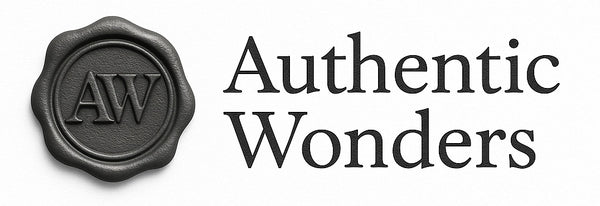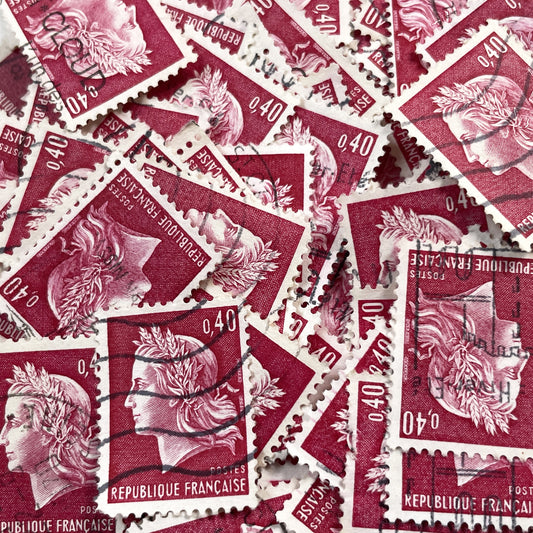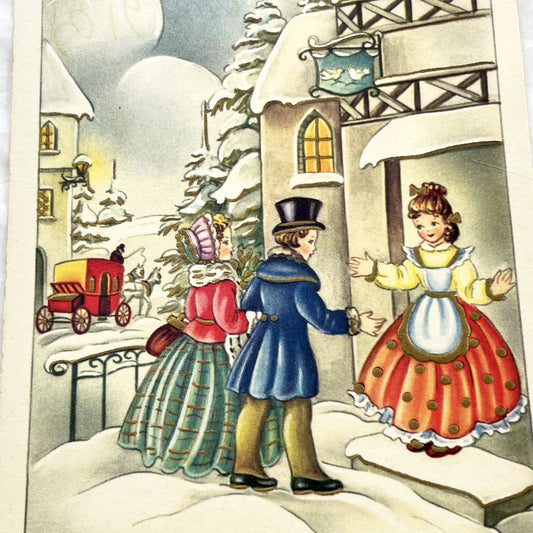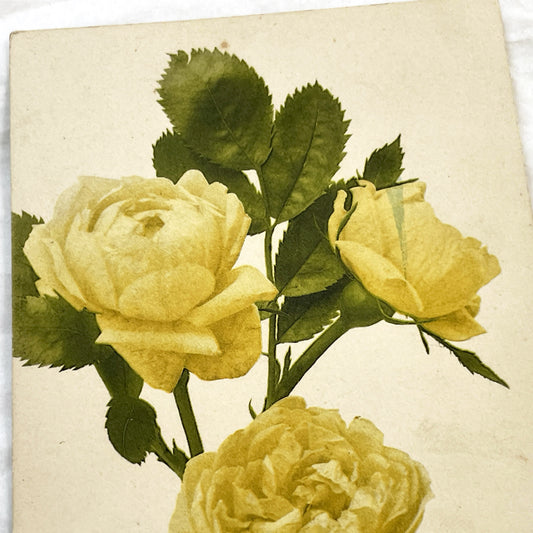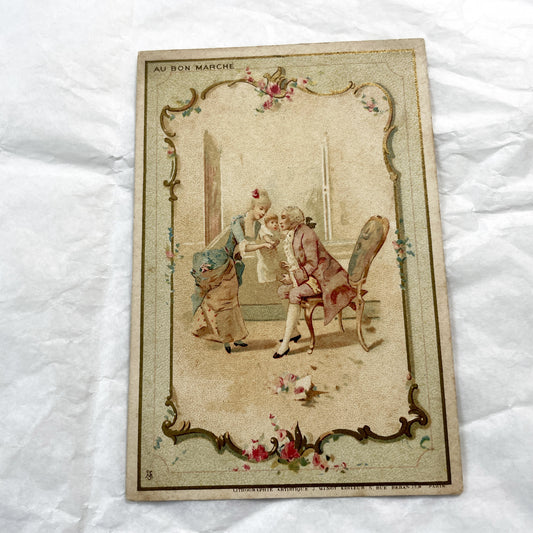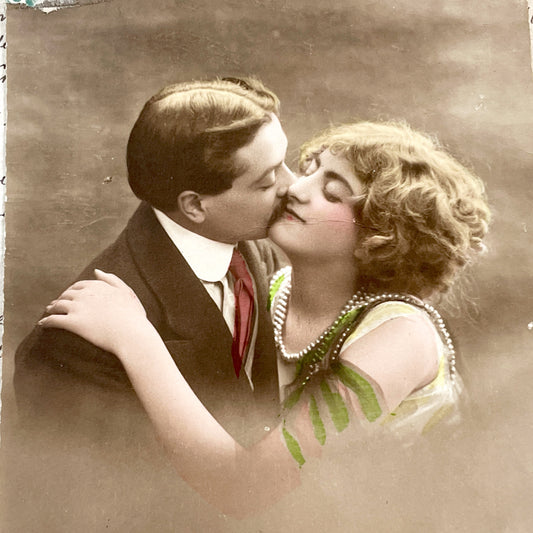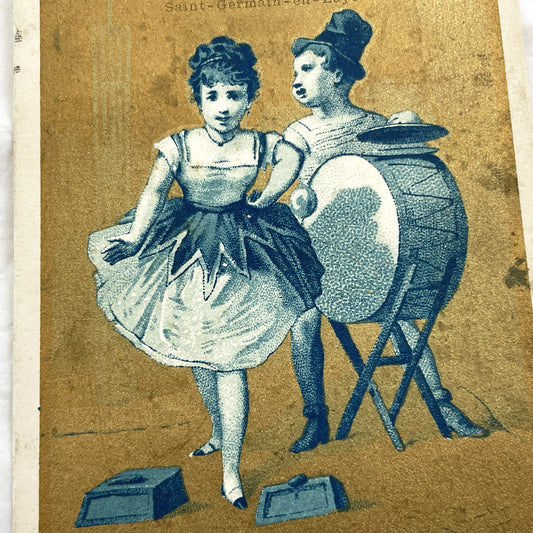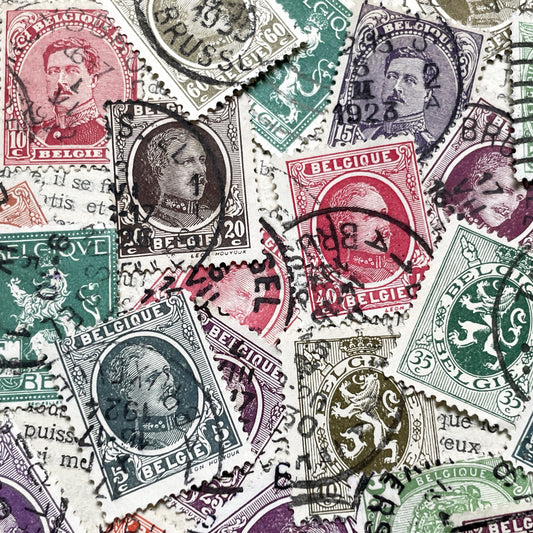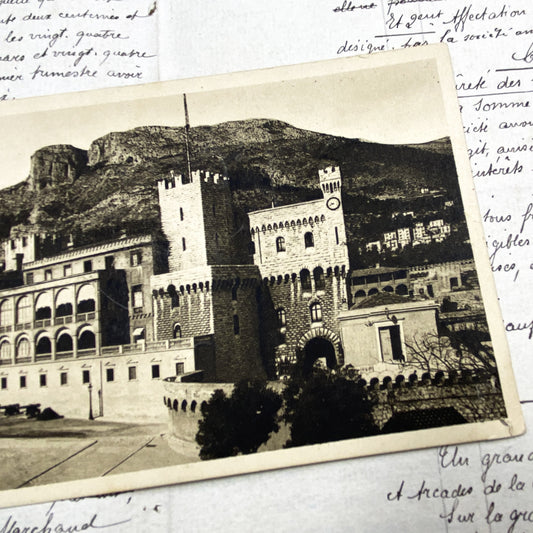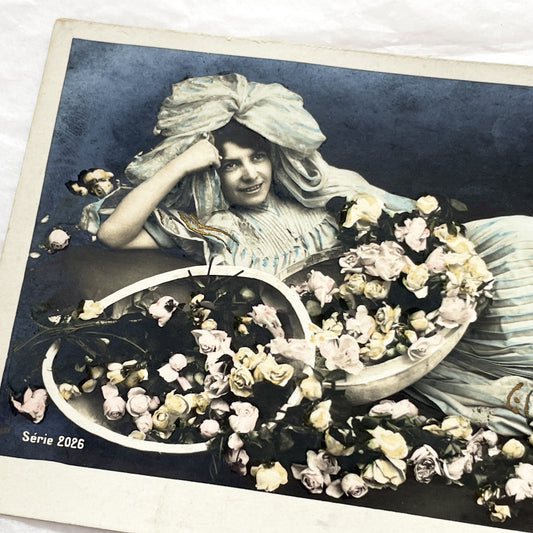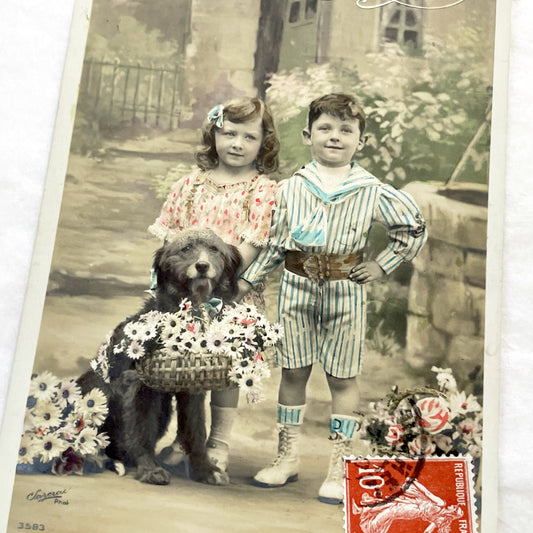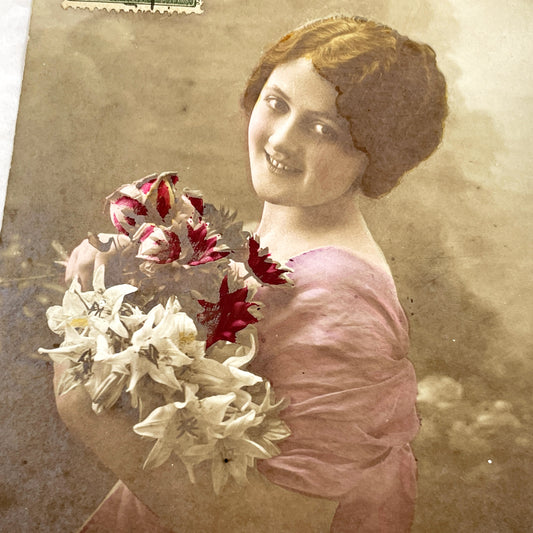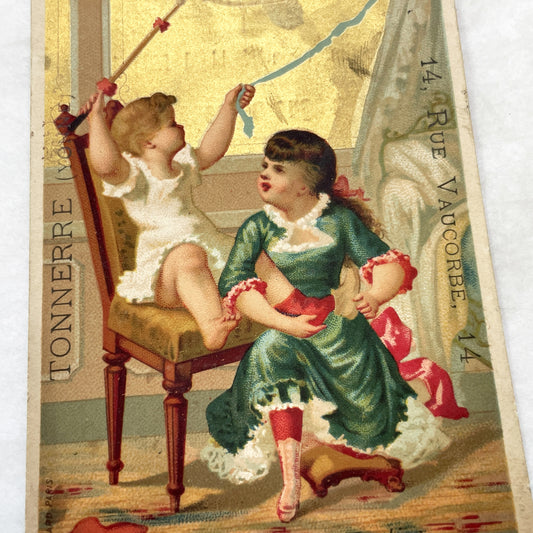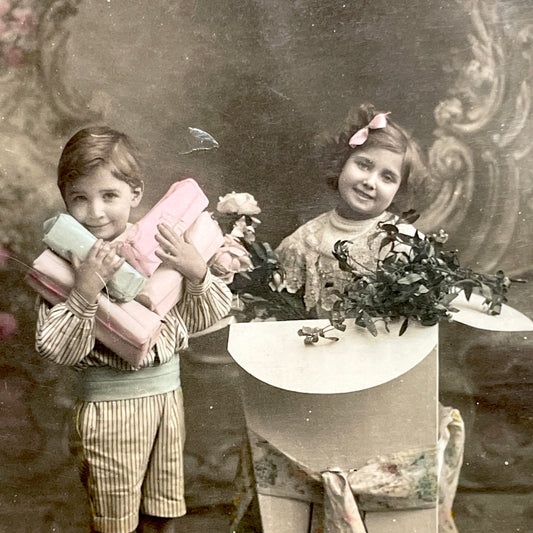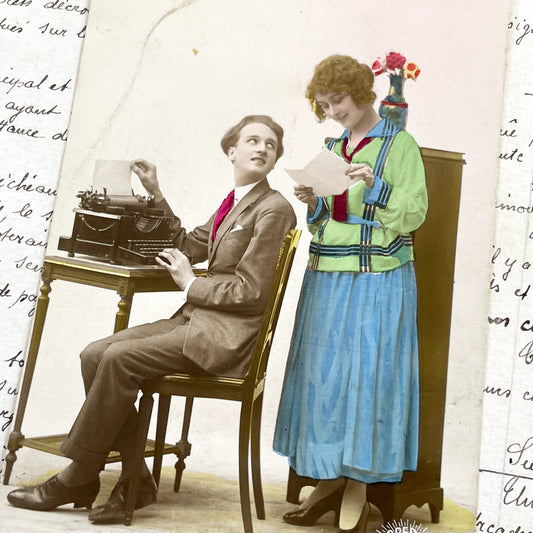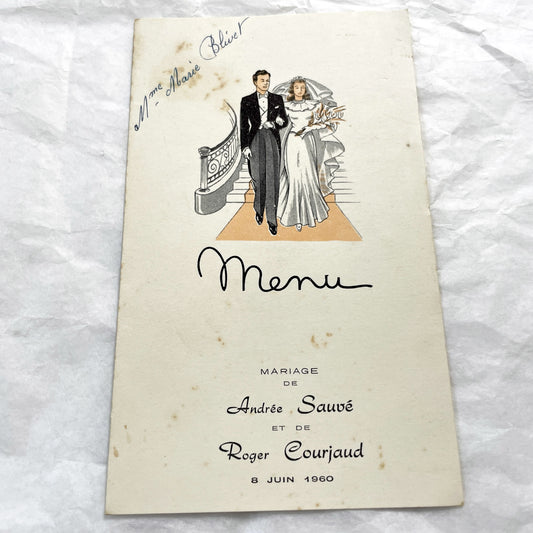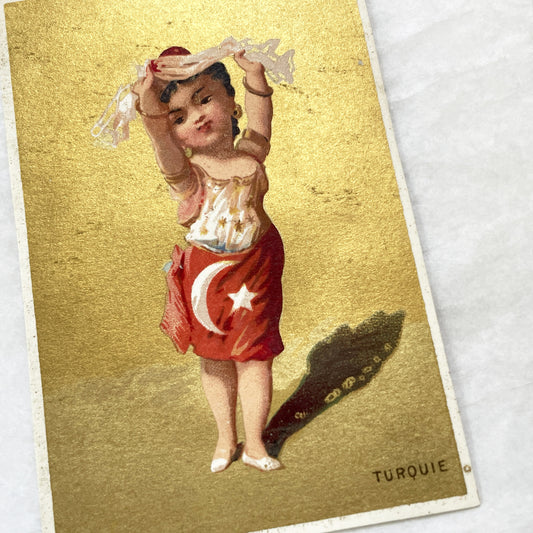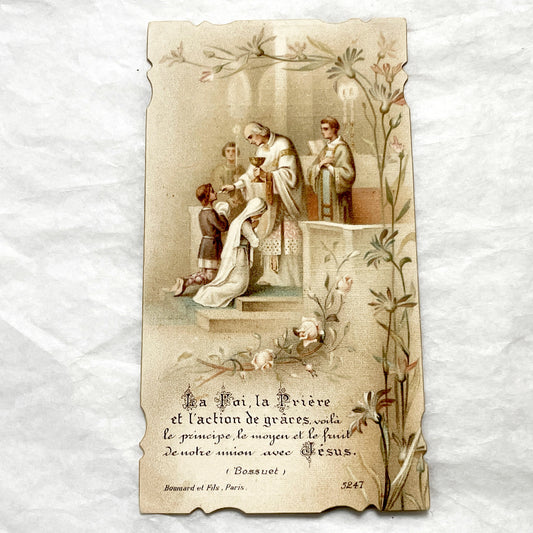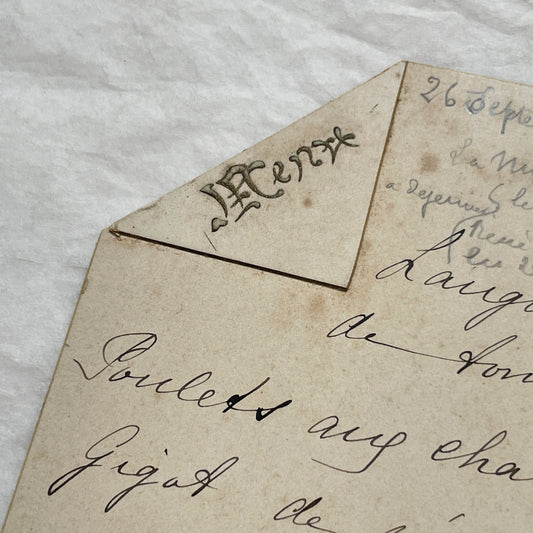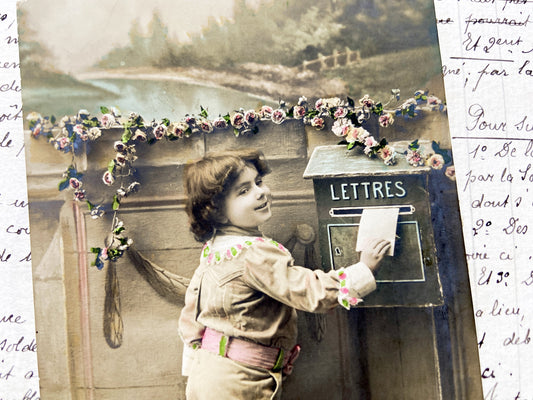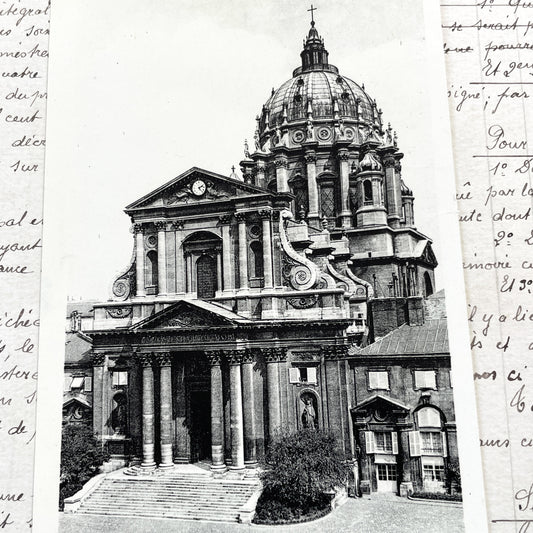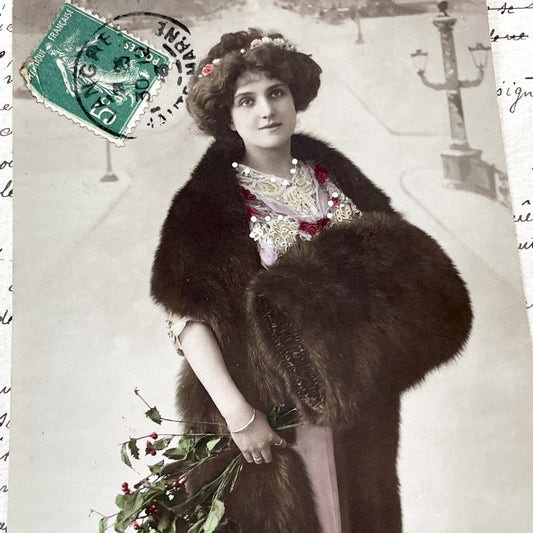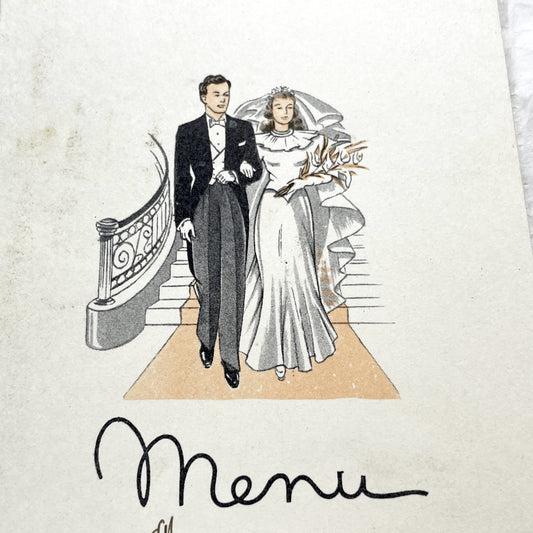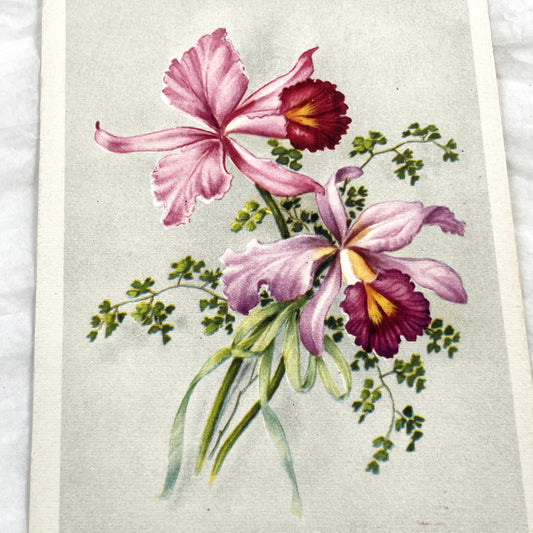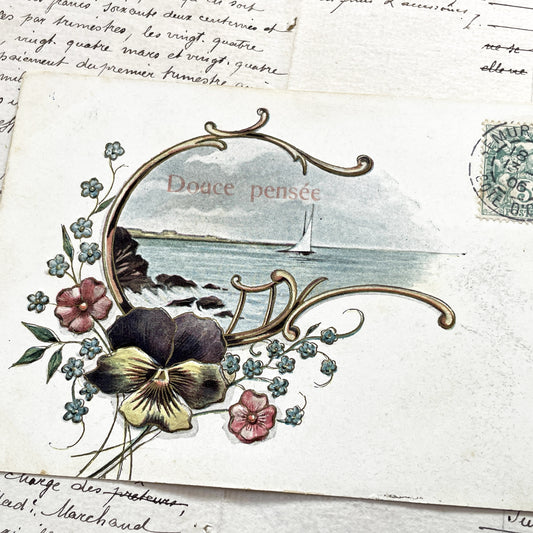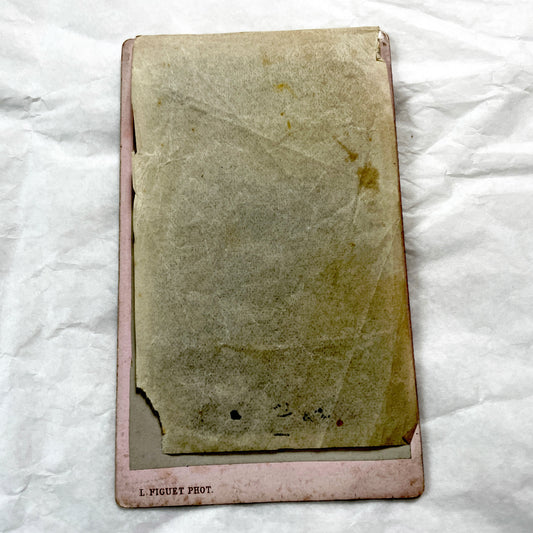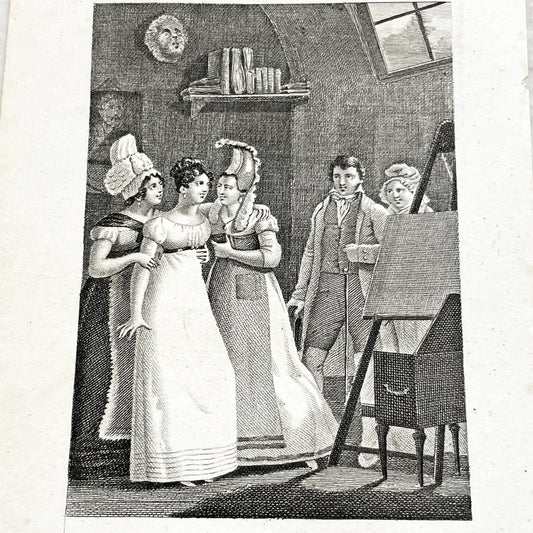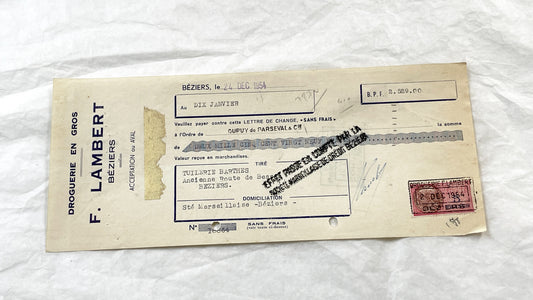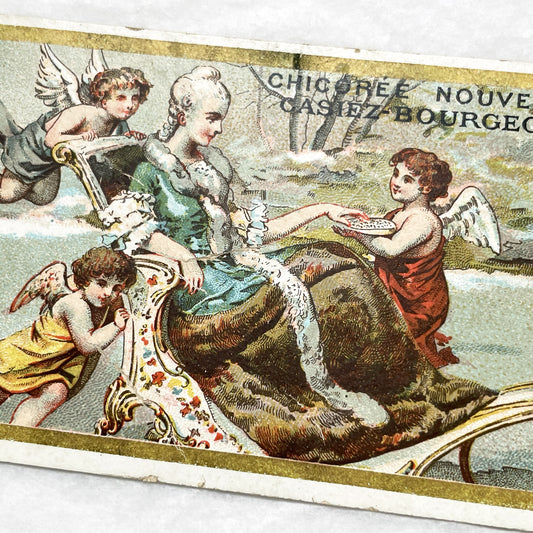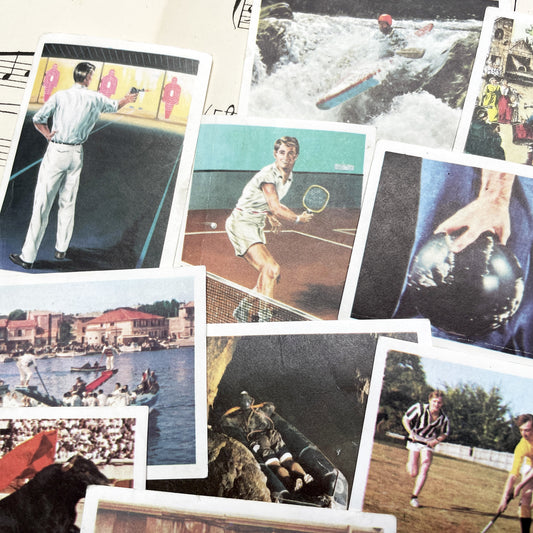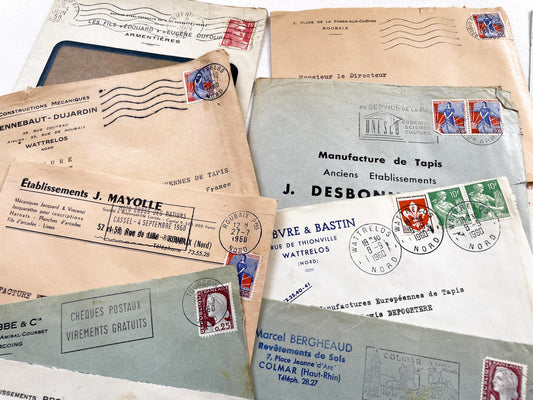-
1960s - Lot of 50 French Marianne stamps – Vintage red or green paper ephemera for crafts and collection
Regular price €4,80 EURRegular priceUnit price per -
1950s - Antique French Bonne Année Postcard - Vintage Snowy Village Scene - New Year Greeting Card - Festive Winter Illustration Collectible
Regular price €3,60 EURRegular priceUnit price per -
1900s - Antique Yellow Roses Postcard - Botanical Flower Art Print - Edwardian Floral Decor - Vintage Garden Ephemera
Regular price €4,80 EURRegular priceUnit price per -
Late 19th - Parisian Advertising Chromo - Au Bon Marche Department Store - Elegant Rococo Illustrations - Vintage French Art
Regular price €5,40 EURRegular priceUnit price per -
1910s - French Hand-Tinted Romantic Kissing Couple Postcard - Le Baiser Antique Love Card - Vintage Sentiment Ephemera
Regular price €4,80 EURRegular priceUnit price per -
Late 19th - Antique French Advertising Chromo Card - H. Ribaut Watchmaking & Jewelry - Saint-Germain-en-Laye Children Performers Art Print
Regular price €6,00 EURRegular priceUnit price per -
1910s - Vintage Belgian Postage Stamps Collection - Historical Philately Lot - King Albert I - European Memorabilia
Regular price €4,80 EURRegular priceUnit price per -
1950s - Vintage European Postage Stamps – Lot of 40 Colorful Stamps from Various Countries – Ephemera for Crafts, Journals & Collage Art
Regular price €3,96 EURRegular priceUnit price per -
1930s - Historic Prince's Palace of Monaco Postcard - Vintage French Riviera Castle - Monte Carlo Heritage - Yvon Photographer
Regular price €3,00 EURRegular priceUnit price per -
1900s - Vintage French Easter Postcard - Elegant Woman Reclining Among Roses - Joyeuses Paques Paris Antique Greeting Card Collectible
Regular price €4,80 EURRegular priceUnit price per -
1910s - Vintage French Postcard - Children, Dog, Daisies Basket - Sailor Suit Boy - Friendship Souvenir - Hand-Tinted Sepia Photoble
Regular price €5,40 EURRegular priceUnit price per -
1910s - Beautiful Young Woman Portrait Postcard - Vintage French Hand-Tinted - Floral Bouquet - Belle Epoque Art - Paris Postmark
Regular price €3,60 EURRegular priceUnit price per -
Late 19th - Vintage French Advertising Card - Chromolithograph Children Playing - Fashion House Advertisement - Textiles & Corsets
Regular price €5,40 EURRegular priceUnit price per -
1910s - Antique French New Year Postcard - Vintage Children's Holiday Greeting Card - Happy New Year Ephemera Collectible Art
Regular price €3,60 EURRegular priceUnit price per -
1920s - Vintage Hand-Colored Postcard - Flapper Era Couple - Typewriter Scene - Parisian Ephemera - Charming Historical Snapshot
Regular price €3,00 EURRegular priceUnit price per -
1960s - Vintage French Wedding Menu - Andrée Roger Wedding - June 1960 Event - Elegant Classic Illustration - Dinner Lunch Celebration
Regular price €3,60 EURRegular priceUnit price per -
Late 19th - Vintage Chromo Card - Turkish Dancer Girl Child - Ottoman Empire Inspired Collectible - Gilt Gold Background - Cultural Ephemera
Regular price €6,00 EURRegular priceUnit price per -
1900s - 2 Antique French Religious Cards - First Communion Souvenir - Virgin Mary Assumption - Sacred Art Ephemera for Collectors
Regular price €5,40 EURRegular priceUnit price per -
1900s - Vintage French Handwritten Menu Card - Historical Dining - Elegant Meal Plan from 1906 - Classic French Cuisine Revealed
Regular price €3,60 EURRegular priceUnit price per -
1910s - Vintage French Postcard - Hand-Colored Child Mailing Letter - Antique Mailbox - French Ephemera Document
Regular price €3,60 EURRegular priceUnit price per -
1930s - Vintage Paris Postcard - Val-de-Grace Church - Paris France - Historic Montmartre Architecture - Black White Photography
Regular price €3,60 EURRegular priceUnit price per -
1900s - Antique French Bonne Année Postcard - Elegant Edwardian Woman in Fur - Hand Colored Holiday Greetings - Vintage Art Photography
Regular price €3,60 EURRegular priceUnit price per -
1950s - Vintage French Wedding Menu - 1954 Marriage Celebration - Gilberte & Julien - Original Collectible Ephemera
Regular price €4,80 EURRegular priceUnit price per -
1950s - Vintage French Orchid Postcard - Bonne Fêtes Greeting Card - Botanical Flower Illustration - Antique Ephemera Collectible
Regular price €4,80 EURRegular priceUnit price per -
1900s - Antique French Postcard “Douce Pensée” – Sailboat & Flowers, Early 1900s Embossed Romantic Card
Regular price €4,20 EURRegular priceUnit price per -
1910s - Ornate First Communion Card - Hand-Painted Religious Memento with Monstrance and Chalice - French Scripture - Spiritual Reflection
Regular price €6,00 EURRegular priceUnit price per -
Late 19th - Young Boy in Sailor Suit Portrait - Vintage Studio Photograph - Children's Fashion - Annonay, France - L. Figuet
Regular price €3,60 EURRegular priceUnit price per -
Early 19th - Antique French Print - Foster Sisters Reunion Engraving - Regency Fashion - Sentimental Bond - Historical Art
Regular price €10,80 EURRegular priceUnit price per -
1910s - Vintage French Dinner Menu 1911 - Culinary History - Exquisite Belle Époque Dining Experience - Rare European Ephemera Collectible
Regular price €3,60 EURRegular priceUnit price per -
1950s - Lot of 6 Vintage French Bills of Exchange – Handwritten Commercial Documents with Stamps
Regular price €7,20 EURRegular priceUnit price per -
Late 19th - Vintage French Advertising Chromo Card for Casiez-Bourgeois Chicory - Rococo Style Artwork with Angels and Elegant Woman
Regular price €5,40 EURRegular priceUnit price per -
1960s - 21 Vintage Sports Collector Cards - Superchocolat 'Unusual Sports' Series - Historical Athletic Illustrations and Photography
Regular price €3,00 EURRegular priceUnit price per -
1920s - Vintage French Sheet Music - Chanson de Route - Ciboulette Operetta by Reynaldo Hahn - Éditions Salabert - Paris - Edmée Favart
Regular price €6,00 EURRegular priceUnit price per -
1870s - Stunning newspaper "Le monde illustré" with beautiful engravings - French newspaper from 1872 - 16 pages
Regular price €9,60 EURRegular priceUnit price per -
1950s - Lot of 20 Vintage French Business Envelopes – 1950s/1960s Ephemera for Junk Journals, Collage & Paper Crafts
Regular price €10,20 EURRegular priceUnit price per -
1900s - Antique French Humorous Postcard - Antique French Comic Postcard – “L’Amour à la Cuisine!” – Humorous Scene with Dialogue
Regular price €4,80 EURRegular priceUnit price per
